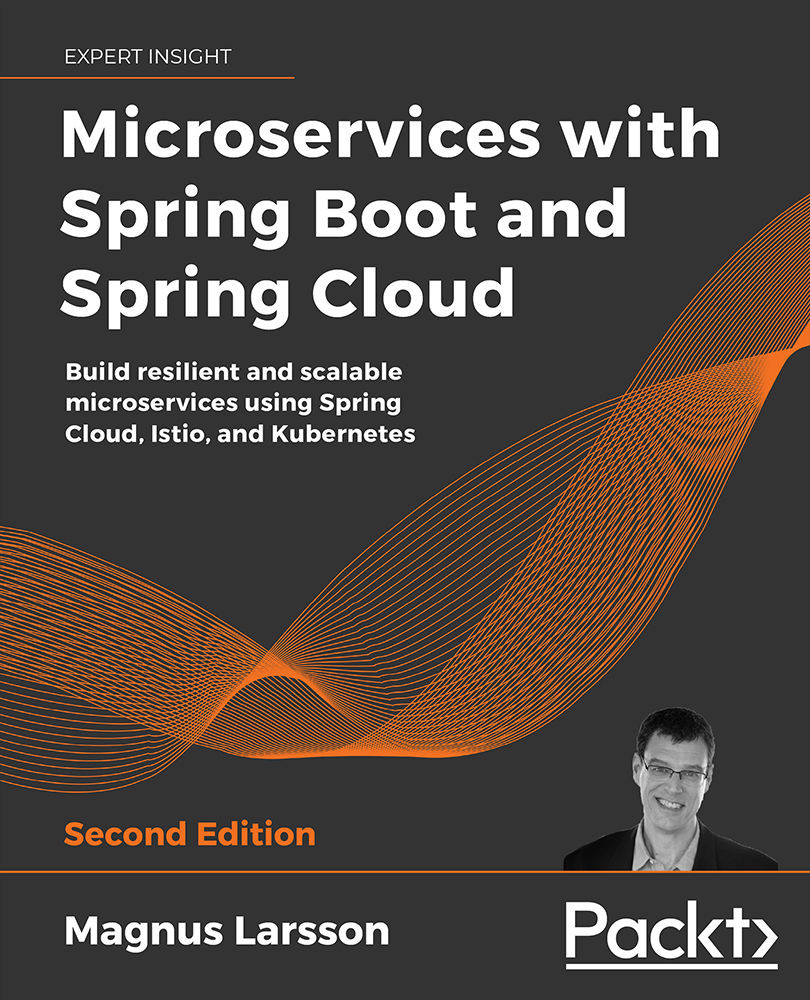-
Book Overview & Buying

-
Table Of Contents

Microservices with Spring Boot and Spring Cloud - Second Edition
By :

Microservices with Spring Boot and Spring Cloud
By:
Overview of this book
Want to build and deploy microservices, but don’t know where to start? Welcome to Microservices with Spring Boot and Spring Cloud.
This edition features the most recent versions of Spring, Java, Kubernetes, and Istio, demonstrating faster and simpler handling of Spring Boot, local Kubernetes clusters, and Istio installation. The expanded scope includes native compilation of Spring-based microservices, support for Mac and Windows with WSL2, and an introduction to Helm 3 for packaging and deployment. A revamped security chapter now follows the OAuth 2.1 specification and makes use of the newly launched Spring Authorization Server from the Spring team.
You’ll start with a set of simple cooperating microservices, then add persistence and resilience, make your microservices reactive, and document their APIs using OpenAPI.
Next, you’ll learn how fundamental design patterns are applied to add important functionality, such as service discovery with Netflix Eureka and edge servers with Spring Cloud Gateway. You’ll deploy your microservices using Kubernetes and adopt Istio, then explore centralized log management using the Elasticsearch, Fluentd, and Kibana (EFK) stack, and then monitor microservices using Prometheus and Grafana.
By the end of this book, you'll be building scalable and robust microservices using Spring Boot and Spring Cloud.
Table of Contents (6 chapters)
Preface
Part I: Getting Started with Microservice Development Using Spring Boot
 Free Chapter
Free Chapter
Part II: Leveraging Spring Cloud to Manage Microservices
Part III: Developing Lightweight Microservices Using Kubernetes
Other Books You May Enjoy
Index

